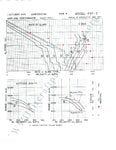TheMadPenguin
Senior Airman
So: B-29... suppose we built it with three R2800s per wing instead of two 3350s?
1: About the same rated power per wing
2: Many many fewer engine-destroying mishaps with the R2800
3: Many fewer planes lost to "causes other than enemy action".
1: About the same rated power per wing
2: Many many fewer engine-destroying mishaps with the R2800
3: Many fewer planes lost to "causes other than enemy action".

